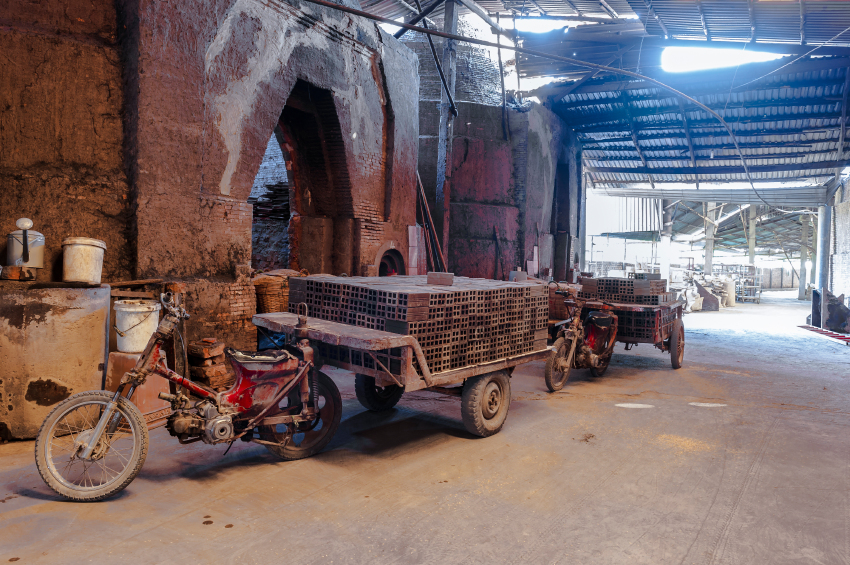Could a one-two punch from the federal government decimate a major American industry? Yesterday we looked at new Environmental Protection Agency (EPA) requirements and cost controversies for controlling air pollution at brick and ceramic manufacturing plants. Today we will review the impact that OSHA’s silica dust rule will have on EHS management tasks at such facilities.
 |
OSHA has finalized a rule that will limit workers’ exposures to silica dust under a new permissible exposure limit (PEL) of 50 micrograms of respirable crystalline silica per cubic meter of air (μg/m3), averaged over an 8-hour day. The new PEL will be the same in all industries covered by the rule. Herein lies much of the controversy for the brick industry.
Note. The final silica dust rule will be published in the Federal Register any time now.
According to OSHA, activities and industries at risk for silica exposure include, but are not limited to:
- Construction, particularly during operations including masonry, grinding, using jackhammers, milling, rock crushing, drywall finishing, and using heavy equipment during earthmoving;
- Hydraulic fracturing (fracking) of oil and gas wells;
- Foundry work;
- Jewelry making;
- Brick, concrete, and pottery manufacturing; and
OSHA has written two standards–one for general industry and maritime, and the other for construction.
According to the Brick Industry Association (BIA), a one-size fits all for general industry for silica dust is overkill and bricks be should be considered separately.
In comment letters regarding the silica dust rule in the proposal stage, BIA claimed that that the current OSHA PEL for crystalline silica was amply protective of brick manufacturing workers and should not be reduced for the brick industry and, in fact, may not even be justified for the industry.
According to BIA, the brick industry should be exempt from compliance with the rule because studies have shown that the low toxicity of crystalline silica in the brick and structural clay industry does not cause a material risk of health impairment that would be remedied by the proposed rule. BIA called on OSHA to maintain the current PEL for brick manufacturing workers, even if OSHA reduces that PEL for industry in general. In the alternative, BIA said that OSHA is empowered to, and should, demonstrate that a reduced PEL is needed to protect workers in the brick industry; technically feasible for the brick industry; and economically feasible for the brick industry.
Cost controversy
According to OSHA, the silica dust rule is estimated to provide average net benefits of about $7.7 billion annually over the next 60 years. It is expected to result in total costs of $1029.8 million for industries covered by the rule. Of that, $659 million will be borne by the construction industry and $370.8 million by general industry and the maritime sector.
BIA called OSHA out for not recognizing that a separate consideration for the brick industry is warranted since the Agency acknowledged, in the preamble to the proposed rule, that the clay brick industry would be among the hardest hit, on a cost per establishment basis, by the requirements, with average annual costs 15 times higher than the industry average.
When?
Employers covered by the construction standard have until June 23, 2017 to comply with most requirements. Employers covered by the general industry and maritime standard have until June 23, 2018.
Need some indepth information on silica exposure? Check out Safety.BLR.com’s Silica Exposure Resource Center for updated information on the new rule and plenty of tips and training tools for protecting your workers from silica exposure.

I’m not sure what BIA is stating: “…studies have shown that the low toxicity of crystalline silica in the brick and structural clay industry….” Studies show exposure levels are already below the PEL, or [less likely] the silica is less toxic? Clarification on that point would be welcome.
As far as cost concerns go, assuming NIOSH, OSHA, et al are correct in their studies, what cost do we place in the health and welfare of workers? Does industry just tell people “You’re not worth keeping alive”? I’ve always found that a curious position.